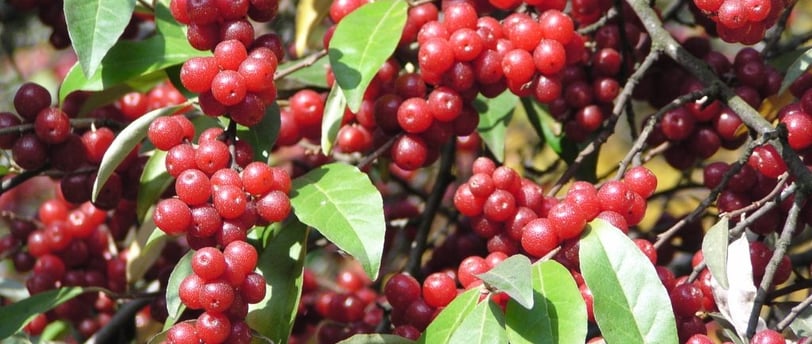Invasives Spotlight: Autumn Olive
WILD EDIBLESINVASIVES
By: Stephanie
9/2/20242 min read


Introduction
Autumn Olive (Elaeagnus umbellata), also known by its botanical name, is a familiar sight in the state of Ohio. This invasive plant species, originally introduced from Asia, has become a widespread problem due to its aggressive nature and ability to outcompete native vegetation. In this article, we will delve into the identifying features of autumn olive and explore why it is considered invasive.
Identifying Features
Autumn Olive is a deciduous shrub that can reach heights of up to 20 feet. Its leaves are elongated and silvery-green on the upper surface, while the undersides are covered in tiny silvery scales. These scales give the leaves a distinctive shimmering effect when the wind blows. The shrub produces small, fragrant yellow flowers in the spring, which eventually develop into abundant clusters of red berries in the fall.
Invasive Nature
Autumn Olive poses a significant threat to native ecosystems due to its ability to rapidly colonize and dominate areas. It thrives in a variety of soil types and environmental conditions, allowing it to outcompete native plants for resources such as light, water, and nutrients. The plant's ability to fix nitrogen in the soil further enhances its competitive advantage, enabling it to thrive in nutrient-poor environments where other plants struggle.
Furthermore, autumn olive's berries are highly attractive to birds, which consume them and then disperse the seeds over long distances through their droppings. This efficient method of seed dispersal contributes to the plant's ability to establish new populations and spread rapidly.
Utilizing the Fruits
While autumn olive is considered an invasive species, it is worth noting that the fruits it produces can be put to good use. The berries have a tart taste when eaten fresh, but they can be transformed into delightful jams, jellies, pies, cookies, and other culinary creations. Harvesting the fruits freely can help control the spread of the plant while also providing a sustainable source of delicious ingredients.
It is important, however, to exercise caution when harvesting and consuming autumn olive berries. Ensure that you correctly identify the plant and avoid confusion with similar-looking berries, as some plants may be toxic or harmful if ingested.
Conclusion
Autumn Olive, or Elaeagnus umbellata, is a common sight in Ohio and many other regions. While its invasive nature poses a threat to native ecosystems, the plant's fruits can be enjoyed in various culinary preparations. By understanding the identifying features and invasive characteristics of autumn olive, we can better appreciate the need for its control while still making the most of its edible bounty.